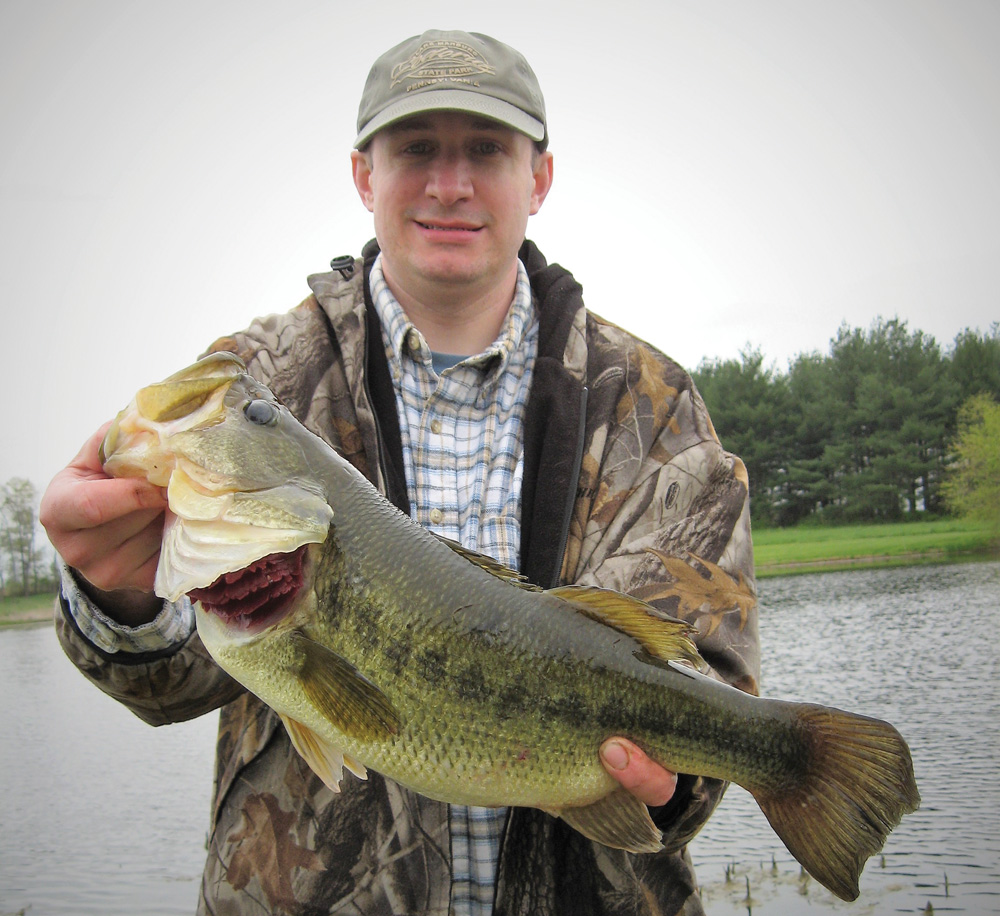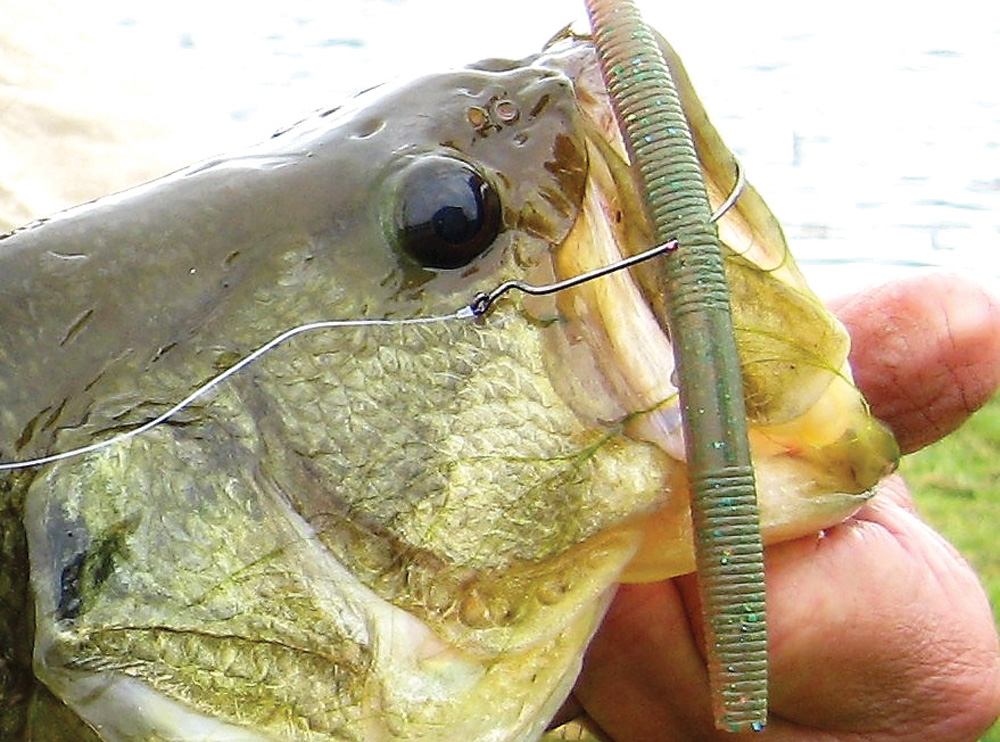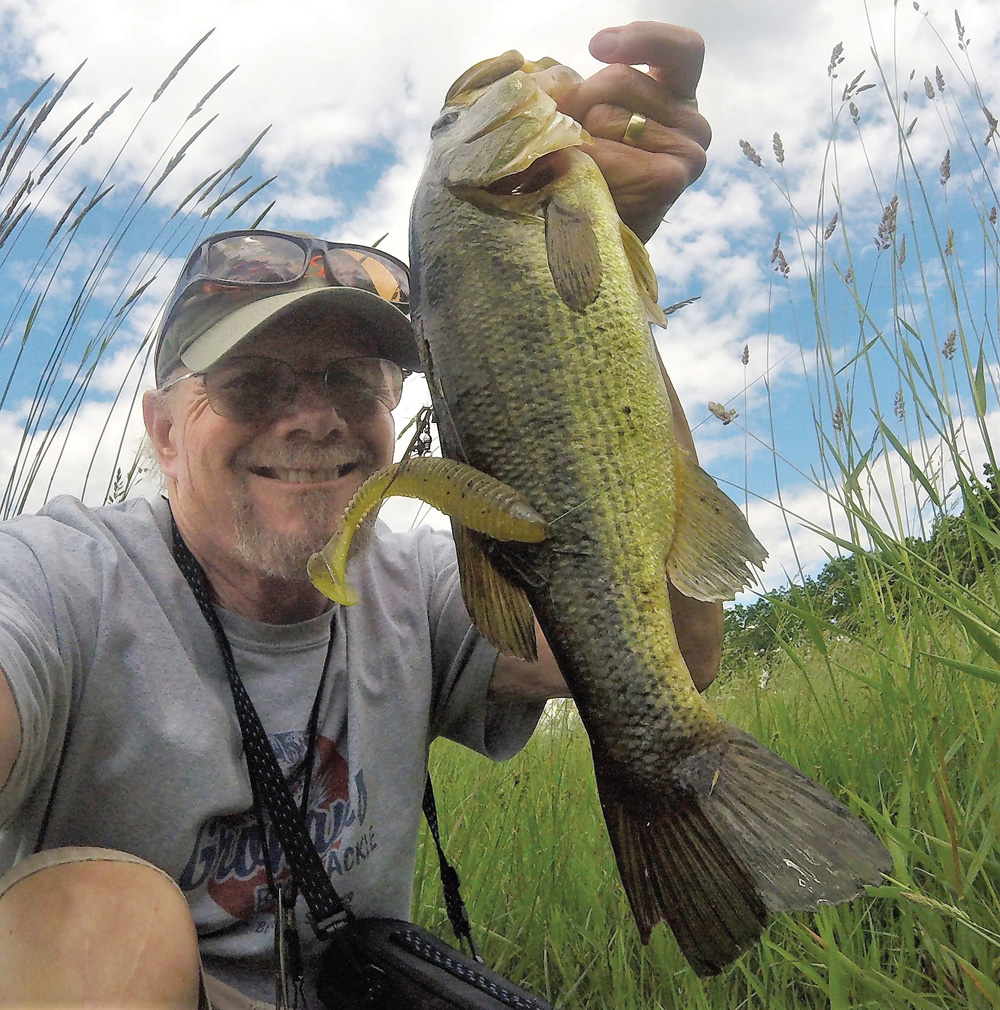Every season bass fishermen look forward to the spring spawning progression that puts big fish in shallow water, making them more accessible than any other time of year. The entire procedure of pre-spawn, spawn, and post-spawn scenarios vary widely depending on the body of water, weather conditions, and angling pressure. What works at one lake might not necessarily work at another lake just 20 miles away. Additionally, a spawning progression can sometimes be at least partially aborted by cold fronts or heavy rains that can chill the shallows of many lakes. Throw in the possibility of low-water conditions, and fish are forced to use spawning areas that they are not accustomed to utilizing, creating even more angler headaches. Add all of these factors together, and when dealing with post-spawn fish it can be a bit difficult to crack the code and make decent catches. Here are a few things to consider to help you catch more bass, after the fish are done spawning.

Soft Plastic Savvy
Depending on the body of water, most fish will be vulnerable to a variety of soft plastics that will catch both shallow and deeper fish. By this time in the spring, emergent and floating weed varieties will be a factor and some fish will utilize them for cover, shade, and ambush points.
Last year during late May and early June we had remarkable success using soft swimbaits from four to five inches in length. These are basically soft-plastic, paddle-tail minnow imitations that can be fished deep or shallow, fast or slow, in and through cover. We like the Reaction Innovations Skinny Dipper, Kei-Tech Swing Impact and the Z-Man DieZel Minnowz for the post-spawn bass. Rig them on a 2/0 Eagle Claw Lazer Sharp worm hook and fish them weightless to get a slow fall in and around emerging weeds, and retrieve them slowly through vegetation. By burying the hook point just below the top of the bait you can have an almost completely weedless presentation. Don’t allow the fish to run forever – set the hook as soon as it starts moving off with the bait to avoid deep hook sets.
You can also fish these swimbaits on a weighted worm hook to attain additional depth, and target transitioning largemouths that are moving deeper than the four- to six-foot range. Slow and steady retrieves with weighted swimbaits worked well for us in flooded wood cover last year, with jolting strikes being the norm. Often, as with Senkos, Stick-O’s and other stick worms, strikes occur as the lure is falling on a slack line.
Speaking of stick worms, there are many types and varieties on today’s market that work well during the “after” period beyond the post spawn. Everybody has their favorite, but we like the Stank-X Stix 4.25- and 5.25-inch worms in Bluegilla and Camo rigged again on a 2/0 offset worm hook, in-line, to enable this offering to snake its way through weeds and vegetation. If weeds are not too heavy, you can fish them wacky-style with the O-Ring or just impale them in the middle.

Essential Tools
Many bass anglers are so accustomed to throwing lures with bait casting gear that they often ignore the effectiveness of spinning options for soft plastics. Both the swim baits and the stick worms are deadly on the spinning rod, with its sensitivity and ease of casting smaller baits. And if underwater obstructions are not too prevalent, you can land a very large fish with such gear. However, if heavy wood or thick vegetation is the game, then medium to heavy bait casting gear and 50-pound braid may be a better option to get fish out of heavy cover.
We use six and a half to seven-foot medium-light spinning rods with a fast tip and good backbone, to set hooks and play bass away from danger. You can get away with 20-pound braid but 14-pound braid will serve in shallower, wood-free fisheries. We use a 12- or 14-pound test monofilament leader from 16- to 24-inches. I have not found that fluorocarbon is essential but to each his own, on that. Some of our biggest fish over the years have been landed on line as light as six-pound test, but that would not be recommended as ideal.

Conservation Considerations
One thing I’ve observed about spawning largemouth bass over the years is that immediately after spawning has ceased, the fish are tired and weakened. Larger females are much lighter in weight and males are likewise worn out from nest-guarding chores. More than any other time of year, these fish need to recover from the vigors of not only the spawn, but from angling pressure as well. Many fish will be transitioning back to deeper waters not too far from their nesting sites. In smaller, shallow ponds and lakes, fish may not have this option, remaining in relatively shallow water simply because it’s all that’s available. This recovery time can vary from one body of water to the next. Obviously, the bass in the area’s water supply reservoirs are going to act and relocate much differently than largemouth in an Eastern Shore mill pond.
When I observe the “empty nest” condition where bass have finished spawning and moved away from those sites, I try and abstain from fishing for bass altogether for a week or two, depending on the water and conditions. Traditionally, when you see newly hatched fry along the shallows it means the spawn is likely over in that location, so you might want to consider giving the fish a rest. Weather variables can greatly affect this timing and, of course, it is each angler’s prerogative to fish, or not to fish, immediately after the spawn. It’s a personal decision, but I prefer to allow tired, exhausted bass to recover and regain some weight and strength before targeting them.
Also keep in mind that throughout the progression of spring the days are longer and air and water temperatures are rising. Sure, you might have an excellent day on a chilly, low 60-degree day with some rain late in May. But the next trip could see 90-degree temperatures and bright sun. When you do stick a good one – and you will – take those photos quickly and release that fish as soon as you can. And remember that these fish have just endured the most stressful and physically challenging time of the year. Yes, they are remarkably resilient, but try not to keep them out of the water to long for those killer “big fish” photos.
~ By Jim Gronaw